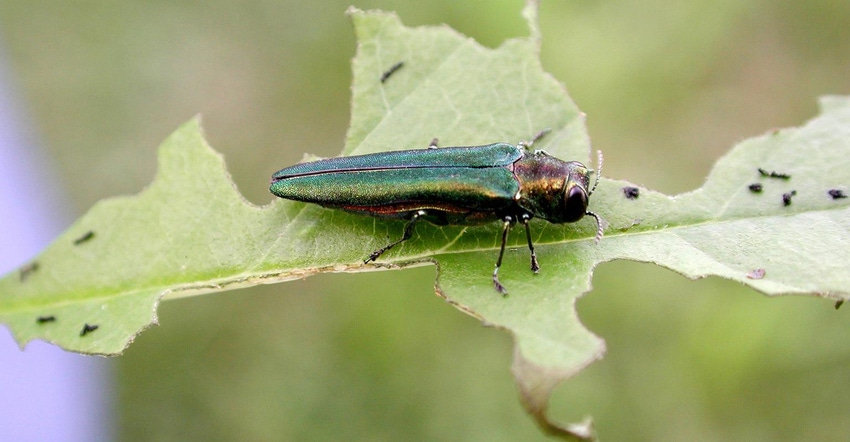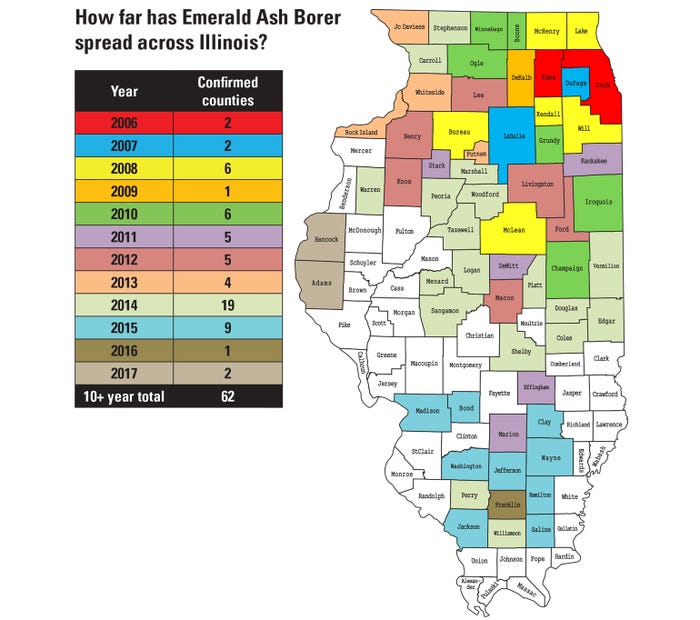
It was in 2006 that emerald ash borer first reared its ugly head in Illinois, popping up in northern Illinois and then spreading southward. While ash trees have died or been removed in large swaths across northern Illinois, many areas of southern Illinois are just beginning to deal with EAB (see map below).
According to Prairie Farmer columnist and horticulturist Fredric Miller, the insect’s larval stage kills ash trees by constructing galleries in the vascular area of the tree. That slows movement of water and nutrients to leaves and restricts flow of that food to other parts of the plant. However, Miller says not all ash species are equally susceptible; green and black ash are preferred EAB hosts, while white and blue are not as easily killed. EAB may take one to two years to complete its life cycle, depending on the ash species and overall tree health.
“Once a tree becomes infested with EAB, the tree will eventually die unless protected by a systemic chemical insecticide,” Miller says.
The University of Illinois and The Morton Arboretum’s Community Trees Program are offering several EAB workshops across southern Illinois. They’re designed to help urban and rural foresters, landowners and community decision-makers learn EAB management tactics. Topics will include EAB biology and its impact on ash trees, what signs and symptoms to look for when identifying EAB in the field, potential community impact of ash tree loss, importance of a tree inventory, importance of public support and outreach efforts, and whether or not to treat your ash tree resource. Organizers will also present and discuss the latest research on EAB management options.
Workshops run from 9 a.m. to 2 p.m., and cost $10. Preregister here, or call 630-719-2468.
• Feb. 21: Carbondale Civic Center, Carbondale
• Feb. 22: Metro East Parks and Recreation District, Collinsville
• Feb. 23: Ballard Nature Center, Altamont
• Feb. 28: Macomb City Hall, Macomb
For questions or further information, email Miller at [email protected].

About the Author(s)
You May Also Like






